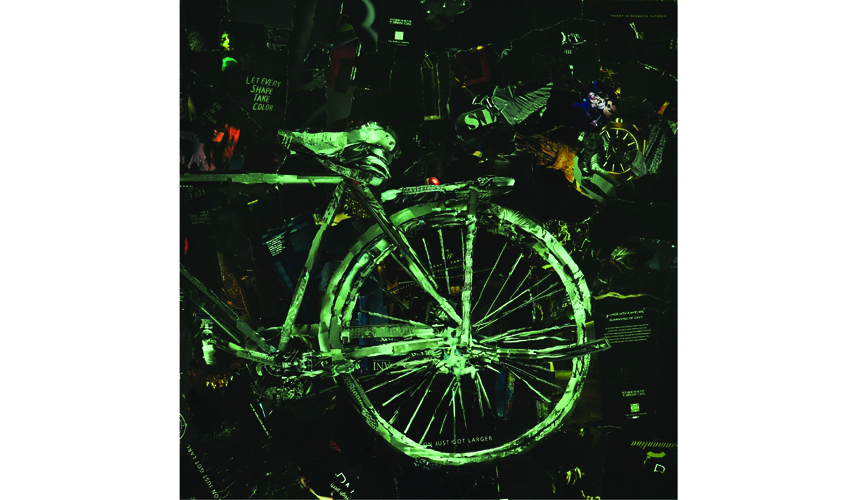Dasgupta is making papier collé artwork — or a collage made entirely of paper bits. “This is not a classical collage I am making, which requires using the exact image of an object to depict the entity — for instance, the use of an image of leaf to show a leaf — but a different one where I am focusing on colours. I am looking for a skin-coloured image to depict a woman but it needn’t be a woman’s image. It could be a car and I will paste it in such a way that it will appear as the face of a woman.”
His ongoing exhibition at Delhi’s India International Centre Annexe showcases 24 of his works created over the past 15 years.
The artist, who also works as a senior associate professor of nuclear engineering at the Tolani Maritime Institute in Pune, gives six hours daily to his art. “I enjoy this work much more than traditional forms because I find this more challenging,” says Dasgupta. “Despite working for many hours daily, I am able to finish only a small patch on the canvas but nevertheless it is satisfying.”
To master the craft of papier collé requires great perseverence. “Practicing this form for the past one-and-a-half decade, I have developed a certain kind of selective vision. This requires practice and no one I have encountered till now is willing to devote this much time in this.”
About the tedious process of composing a papier collé, Dasgupta says, “The course of action is difficult. It needs more of seeing and less of working. I keep on rummaging through newspapers till I find what I want. Sometimes I have to go through ten magazines for one piece I need to complete the work. I choose the paper bits based on their reflectivity, printing style, texture, thickness, transparency, style of printing and much more. Paper behaves differently. Various magazines or newspapers work with dissimilar types of paper and for a particular artwork I use only one type. I prefer tearing the paper off by hand rather than cutting it by scissors since merging is easier by using the former method.”

What inspired him to take this path? “Keen observation,” he says. “The simple act of observation has led me this far. I monitor minute details of my surroundings and the places I visit, and apply those to my artwork. Apart from this, I am very interested in mythological subjects, like the Mahabharata. I also keep looking at the work of Vincent van Gogh.”
Earlier, Dasgupta would dabble in oil paintings but it was papier collé that held his fancy after a while. “When I started experimenting in papier collé, nothing could turn me away from it. I can work in this medium relentlessly. My artworks look like oil paintings because I was working in that medium for quite some time. However, the artworks can be made to look like other forms of painting as well,” he says.
The artist doesn’t have a college degree in art but while in high school, he was a member of the art club and was taught by acclaimed artists like Phalguni Das Gupta and G.P. Goswami. “We were taught art in a very different way from art schools. The focus was on exploring ideas and thinking about art in a fresh manner. I think the way we were made familiar with art, it was much better than any art school,” he says. Today, art students from across Pune are his regular visitors, especially during his exhibitions. “When I have an exhibition in the city, art students are brought to stay in the gallery for the whole day to observe and understand my art.”
It is mostly seen that artists living in small towns don’t get much chance to promote their work as their counterparts staying in the metros often steal their thunder. Dasgupta is aware of this, but he is satisfied with the things as they are. He says, “Living in the Induri village near Pune while teaching at a college, I am able to practice my art without any distractions. The environment is quite peaceful in the campus I stay in. Yes, I definitely think that if I had stayed in Delhi, as such, the art galleries would have behaved differently with me. I could have done 20 solos till now but all this doesn’t bother me much as I am able to do my work without any hassle after college hours. My idea is to make people enjoy the work I produce.”
Celebrating the Ordinary, an art exhibition by Sukanta Dasgupta, continues till 23 November at India International Centre Annexe in Delhi

